I try not to do this, try not to inflict one of those self-absorbed, egotistical chronicles about “what I did on the 19th of May,” but the fact is I had a good day afield on the 19th of May. Besides, I’m a fairly self-absorbed and egotistical kind of guy. Herewith the chronicle.
I went north into the mountains.
Fair warning: some of this is going to get photo-wonky.
It was a foggy morning; more accurately, the ceiling was below the tops of the mountains. 1 The valleys were clear, but the ridgetops were not.

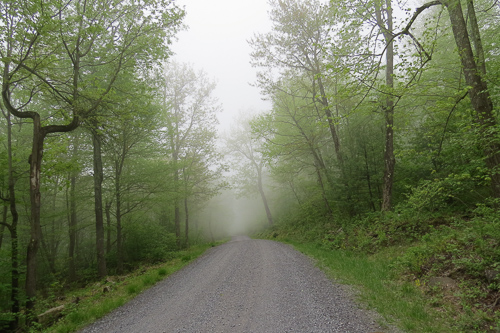
It was the kind of even light that real photographers like.
I hate it.
I generally chase things that move—a lot—and I use a big chunk of glass to take my pictures. For the non-photographic folks out there, big chunks of glass need a lot of light or they need to be mounted on a tripod. Tripods are great—unless you’re chasing things that move a lot.
So today was a day for rocks; rocks don’t often move. 2
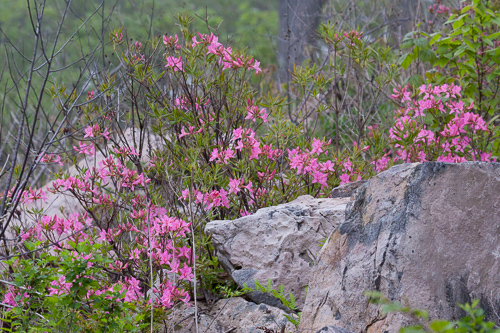
And flowers. I generally take flower shots with a long macro on a tripod. 3
It is almost impossible for me not to stop and take a picture of Yellow Lady’s Slippers (Cypripedium parviflorum).
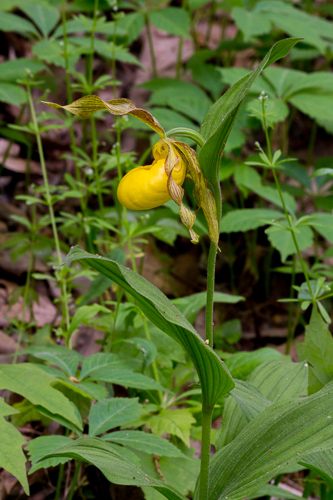
Now, plants don’t move, but the slightest breeze will make most wildflowers dance around like a squirrel’s tail in a windstorm.
A breeze began about fifteen minutes after I stopped the car.
Happily, Showy Orchis (Galearis spectabilis) is low and stout and fairly unaffected by the wind.
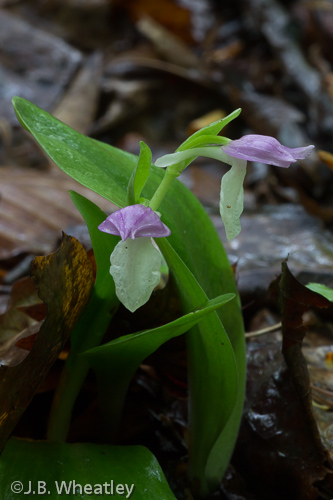
The breeze became a wind within ten minutes, so I put away the big glass and took off on a hike with my little camera (Canon PowerShot SX50 HS).4 I’m still learning this camera; on this trip, I learned a lot.
First off, the macro is surprisingly good. Resist the temptation to zoom. Pull the lens back to wide angle, turn on the live display, then extend your arm and use the resistance of the strap against your neck to steady the camera. Works like a charm.
This little bird-dropping is actually a moth (probably Schlaeger’s Fruitworm Moth, Antaeotricha schlaegeri).

I was happily surprised by the quality of these images, and I am pretty certain that, had I tried harder to hold them steady, I could have improved on these quite a bit. I really didn’t expect this to work.
Another interesting thing, insects will tolerate a camera at arm’s length coming far closer than they will a camera with a face behind it.
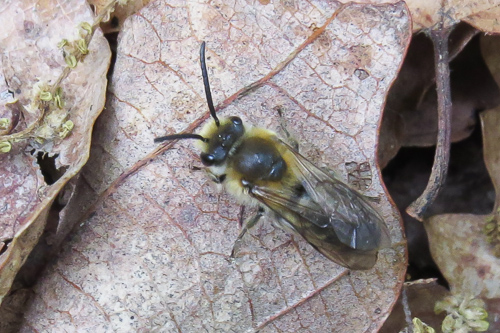
These digger bees were busily building burrows and patrolling the forest floor along the trail. 5
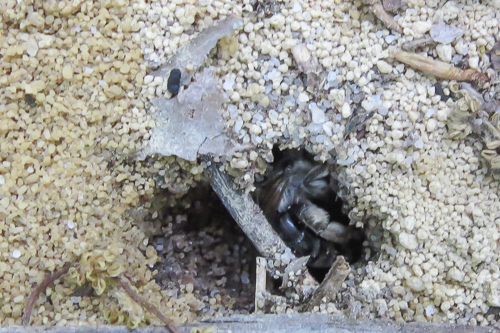
A couple of years ago, the incomparable Bill Bower published an article on digger bees (he calls them “mining bees,” another generic term for the same bunch of bees) in the Williamsport Gazette. It’s a great read by one of our finest outdoor writers.6
If I could ID these bees without whacking one of them, I might try. Many of these digger bees “are generalist bees visiting many different plants for pollen and nectar.”7 However,
“some species have very narrow host-plant preferences. These specialist bees are referred to as oligolectic. Approximately 20% of the species in the northern portions of the United States restrict their pollen collecting to just a few closely related plant species. For example, many species of Colletes are restricted to plants in the family Compositae, such as Heterotheca, Aster, and Solidago.”8
I would love to say that I had seen an oligolectic bee. Wouldn’t that impress my friends and acquaintances?
**The non-photographers might as well go on and read something else at this point. The rest of this is “how I shot this amazing picture” quasi-technical stuff.
My little Canon also did a very nice job on some wildflowers. It needs less light, so I was able to shoot this Wild Geranium (Geranium maculatum) at an ISO of 320 and, because the image stabilization is quite good, I shot hand-held at 1/15 sec during a lull in the wind.
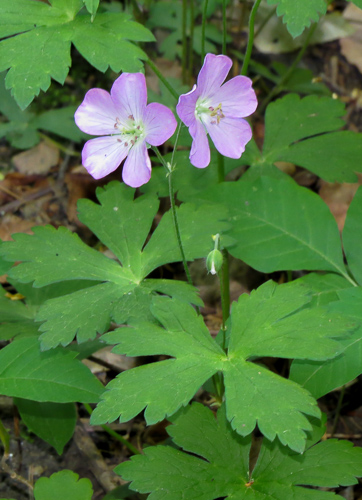
I shot these Pink Lady’s Slippers (Cypripedium acaule) at an ISO of 800 at 1/50 sec. The aperture is f 5.0—yet look at the depth of field. At that aperture on my DSLR at this distance, I would not have acceptable focus from front to back of an individual bloom.
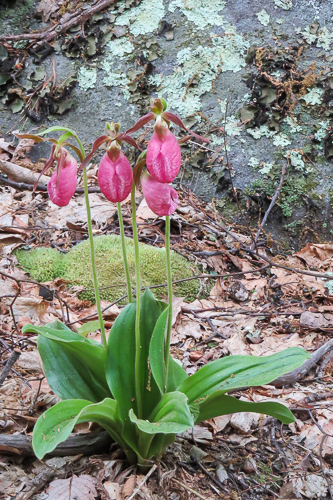
There was a nice False Solomon Seal (Polygonatum racemosa) right next to the car, so I thought that I would experiment a little with high ISOs on my DSLR. The flower was prancing about in the breeze, so I used flash to stop the movement.
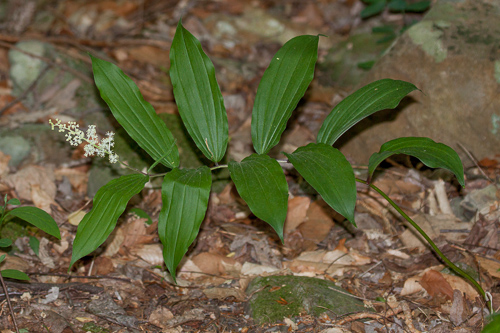
That worked at 1/180 sec., f 5.6, ISO 400, but I don’t like the color rendition (too orange), and I hate that unnatural shadow. I can fix the color in post-processing (I haven’t)—can’t do a thing about the shadow.
So, I shot it without flash at 1/125 sec., f 5.6, ISO 1600. and it’s okay. First, I set a custom white balance. Canon’s auto white balance (AWB) is fantastic. The only place it falls short, in my experience, is under shade in a very green woods.
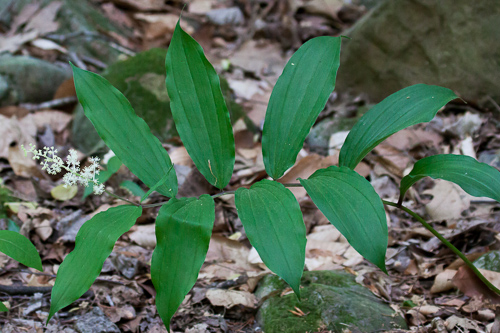
That’s better. Yes the detail is somewhat less, but the colors are true, and there is no shadow. Certainly good enough for the web.
I wish I had thought to line the blossom up with that nice dark rock in the background though—sigh.
- Ceiling refers to the bottom of a cloud layer.
- Note, if the rocks start moving, leave the area immediately—that is, get away from the rocks.
- My long macro is a 180mm—great lens, keeps me from having to get down on my belly like a reptile. Getting low isn’t the problem; getting up is.
- Full disclosure: I’m an Amazon Associate, and if you click on this link, I earn a pittance. If you actually buy the camera, I get a larger pittance.
- You will note that “digger bees” is not in uppercase, that’s because it is a generic term for dozens of different bees, and I have not, as yet, identified this to genus, much the less species.
- Bill Bower, “Reflections in Nature: Mining bees burrow holes through the soil,” Williamsport Sun-Gazette, 27 June 2010. Available online at http://www.sungazette.com/page/content.detail/id/545349.html?nav=5013 (accessed 20 May 2013).
- The New York State Biodiversity Clearinghouse, Bees of New York State, http://www.nybiodiversity.org/summaries/bees/species.html (accessed 20 May 2018).
- Ibid. Compositae refers to the daisy-like flowers: Heterotheca contains large flowers, like Camphorweed, Solidago refers to the Goldenrods (you have to use a hand lens to figure out what those flowers have in common with daisies), and Aster—well, I won’t insult your intelligence.
